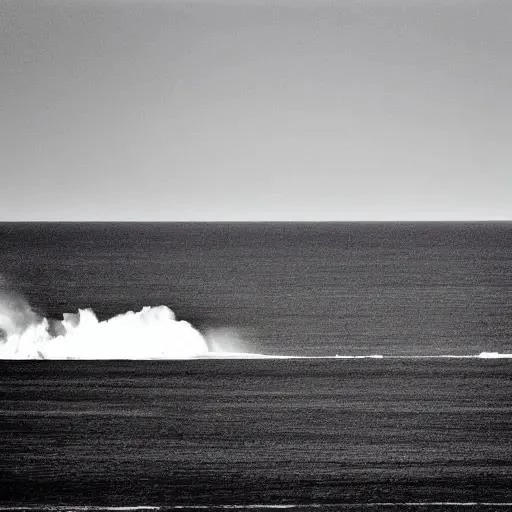The ocean, with its vast, enigmatic expanse, has always been a siren call for humanity’s most intrepid explorers. While recreational scuba diving allows us to glimpse the vibrant ballet of coral reefs and schools of fish in relatively shallow waters, a select few are driven to push the boundaries, venturing into the profound, crushing silence of the deep. Imagine descending to 600 feet deep for scuba diving – a realm where light struggles to penetrate, where pressure mounts to an astonishing 270 pounds per square inch, and where every breath is a meticulously calculated act of defiance against nature’s formidable forces. This isn’t merely a dive; it’s a meticulously orchestrated expedition into an alien world, unlocking secrets that have remained hidden for millennia.
Far from a reckless endeavor, this extreme form of technical diving represents the zenith of human ingenuity and resilience. By integrating insights from advanced physiology, cutting-edge engineering, and rigorous training protocols, divers are now routinely and safely exploring depths once considered impossible. This isn’t about mere bragging rights; it’s about scientific discovery, mapping uncharted underwater landscapes, documenting lost wrecks, and observing marine life in its pristine, undisturbed habitat. The pioneering spirit driving these descents is not only revealing new wonders but also propelling advancements in materials science, gas technology, and emergency preparedness that benefit all forms of underwater activity, fostering a future where the deep ocean might yield even more of its profound mysteries.
| Category | Information |
|---|---|
| Topic: | Deep Technical Scuba Diving: Pushing the Limits of Underwater Exploration |
| Description: | The deep end of technical diving, targeting depths beyond standard recreational limits (e.g., 600 feet or approximately 180 meters), requires specialized training, equipment, and meticulous planning. It’s an arena for scientific research, exploration of pristine environments, and pushing human limits. |
| Primary Goal: | To enable qualified technical divers to safely and deeply explore previously inaccessible or unknown underwater environments for scientific research, exploration, and documented historical interest. |
| Motivation: | Driven by curiosity, scientific discovery, and the profound human desire to explore uncharted territories. |
| Technology Focus: | Advanced technical diving, particularly with closed-circuit rebreathers (CCR), specialized gas mixtures (e.g., Trimix, Heliox, Hydrox), decompression algorithms, and modern dive computing. |
| Challenges: | Overcoming extreme pressure, nitrogen narcosis, oxygen toxicity, decompression illness, equipment limits, physiological stress, and environmental hazards at great depths. |
| Future Vision: | To continue expanding the boundaries of human presence in extreme aquatic environments, leveraging emerging technologies to enhance safety, efficiency, and depth capabilities for scientific advancement and exploration of our planet’s ultimate frontiers. |
| Link for Reference: | Technical Diving International (TDI) |
The Allure of the Abyss: Why Go So Deep?
What compels individuals to descend into such extreme environments? For many, it’s the insatiable thirst for knowledge. Deep-sea ecosystems harbor unique species, geological formations, and chemical processes that are vital to understanding Earth’s biodiversity and history. Dr. Sylvia Earle, a legendary oceanographer and explorer, often articulates this sentiment: “No water, no life. No blue, no green.” Her words resonate deeply with those who brave the depths, recognizing that every dive offers a chance to uncover critical pieces of our planet’s intricate puzzle; Moreover, the historical significance of deep wrecks—from ancient galleons to World War II submarines—provides invaluable archaeological insights, preserving stories that time and current have tried to erase. The sheer personal challenge, too, is undeniable, an ultimate test of discipline, mental fortitude, and teamwork.
Technological Marvels: Reaching the Edge of the Abyss
Achieving depths like 600 feet is a triumph of modern technology. Gone are the days of simple compressed air; today’s deep divers rely heavily on Closed-Circuit Rebreathers (CCRs). These sophisticated devices recycle exhaled gas, removing carbon dioxide and precisely adding oxygen, thereby extending bottom times dramatically and making dives more efficient. This stands in stark contrast to traditional open-circuit scuba, which would require an impractical number of bulky tanks for such an extended descent. Furthermore, specialized gas mixtures are paramount. Trimix, a blend of oxygen, nitrogen, and helium, is incredibly effective at mitigating the debilitating effects of nitrogen narcosis and reducing the risk of oxygen toxicity, critical concerns at elevated pressures. Helium, being less dense, also lowers the respiratory effort, a significant advantage when working hard in a high-pressure environment. These technological breakthroughs, often developed through extensive research and field testing, are truly revolutionizing what’s possible underwater.
Training and Expertise: Forging Elite Deep Divers
The journey to becoming a diver capable of safely reaching 600 feet is incredibly arduous, demanding years of dedicated training and accumulated experience. It’s a progressive path, moving from recreational certifications to advanced technical courses focused on decompression procedures, mixed gas theory, and rebreather operation. Instructors in this field are often seasoned veterans, possessing thousands of deep dives under their belts, imparting not just skills but a profound respect for the ocean’s power. “Deep diving is 90% planning and 10% execution,” states renowned technical diving instructor, John Chatterton, emphasizing the meticulous preparation involved in every aspect, from gas calculations to emergency contingencies. This includes not only mastering equipment but also developing an acute awareness of one’s own physiological limits and psychological resilience. The ability to remain calm and problem-solve under immense stress is as crucial as the gear itself.
Overcoming the Perils: A Calculated Risk
The deep ocean is an inherently hostile environment, presenting a suite of physiological challenges that must be meticulously managed. Decompression sickness, or “the bends,” remains a primary concern, necessitating lengthy, precisely timed decompression stops during ascent to allow inert gases to safely off-gas from tissues. Oxygen toxicity, where elevated partial pressures of oxygen become poisonous to the central nervous system and lungs, is carefully mitigated by precisely controlling gas mixtures. Nitrogen narcosis, the “rapture of the deep,” can impair judgment and motor skills, a danger significantly reduced by incorporating helium into breathing gases. Equipment failure, though rare with redundant systems, is always a possibility, requiring divers to be proficient in a wide array of emergency protocols. Yet, through rigorous training, advanced equipment, and unwavering adherence to established safety protocols, these formidable risks are carefully calculated, managed, and minimized, transforming potential dangers into navigable challenges for the prepared explorer.
The Future is Deep: AI, AUVs, and Beyond
Looking ahead, the future of deep diving is incredibly promising, poised for even greater breakthroughs. The integration of artificial intelligence and advanced robotics is already beginning to reshape the landscape of underwater exploration. Autonomous Underwater Vehicles (AUVs) are increasingly being deployed to scout deep environments, collecting data and mapping terrain that human divers might struggle to reach, or that are too hazardous for prolonged exposure. This symbiotic relationship between human and machine is unlocking new efficiencies and expanding our reach. Furthermore, innovations in materials science promise lighter, stronger, and more thermally efficient dive suits, while advancements in medical monitoring devices will offer real-time physiological data, enhancing diver safety. Imagine a future where AI-driven dive computers dynamically adjust decompression schedules based on individual physiological responses, or where next-generation rebreathers offer even greater depth and endurance. The human spirit of exploration, coupled with accelerating technological progress, ensures that the deep ocean will continue to reveal its wonders for generations to come, fostering a collective commitment to understanding and preserving these pristine, vital ecosystems.






